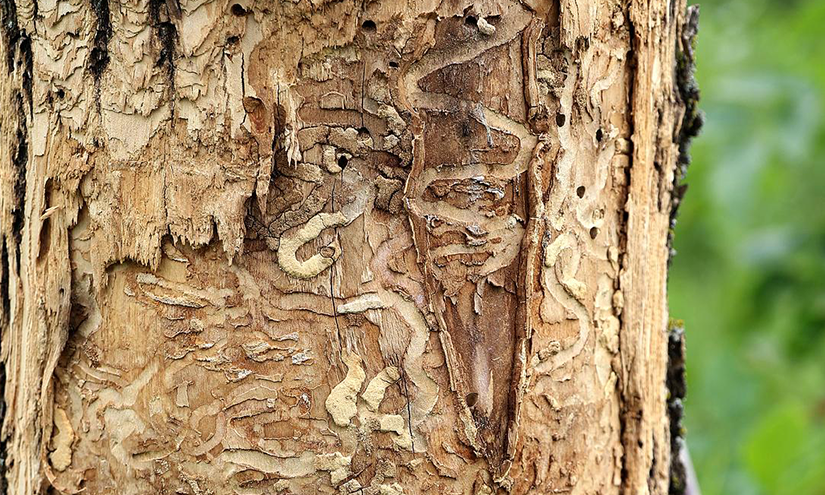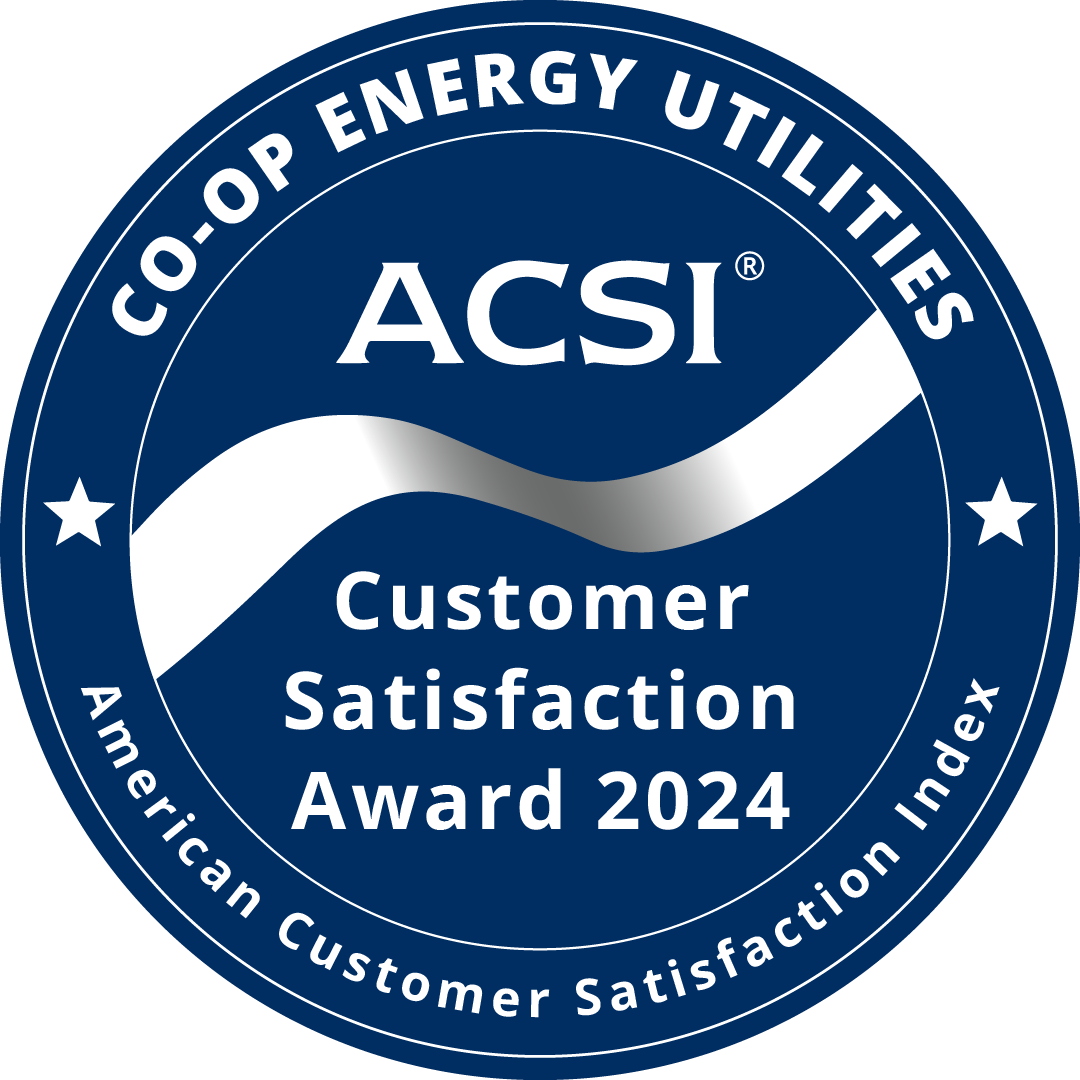
A. The emerald ash borer, or EAB, is an exotic metallic green wood-boring beetle native to eastern Asia. This insect feeds almost exclusively on ash trees, but has been found to infest our native fringetree as well. In its natural environment, EAB is not a significant threat to healthy ash trees, but in North America, EAB is a highly destructive invasive species.
A. Any member who has dead ash trees near our overhead power lines should call REC at 800-552-3904 to request an assessment by one of REC's arborists. Dead or declining trees that pose an imminent hazard to REC power lines will be taken down by our contract crews at no expense to the member. Trees that would impact only the service line to a member will not be taken down by REC, but REC will drop the line for the member to have the trees removed. The wood will be left on site to be used or disposed by the member.
A. REC does not haul off wood resulting from the take down of trees adjacent to our power lines, and ash wood should not be moved off of the property to minimize the risk of spreading emerald ash borer.
A. REC will cut down the ash tree to eliminate the hazard. If the tree is in your yard, the branches will be chipped and hauled away if they are not too rotten or brittle. The stump will be cut as low to the ground as possible. The wood will be cut into manageable lengths and piled near the stump. Ash trees in wooded locations may be felled into the woods in their entirety.
A. EAB was initially identified in southeastern Michigan and adjacent Windsor, Ontario, Canada in 2002. EAB probably arrived in the United States on solid wood packing material carried in cargo ships or airplanes originating in its native Asia. Since its discovery, EAB has spread rapidly and has now been confirmed in 30 states and two Canadian provinces, as far west as Colorado, south to Texas and Georgia, and east to most of New England. Hundreds of millions of ash trees have already been killed, with the expectation that ash abundance will be significantly reduced nationwide
A. In Virginia, EAB was first identified in Fairfax County in 2003, but it was successfully eradicated. It was reconfirmed in Fairfax County in 2008 and has since spread throughout half of the counties within the Commonwealth. The entire state is currently under quarantine. The EAB's effects are most notable in the northwestern portion of REC's service territory, where ash trees make up a larger portion of our native forest.
A. Adult emerald ash borers feed on ash leaves, but cause little damage to the tree. Adult beetles lay eggs in bark crevices and cracks of ash trees, where they hatch in one to two weeks. The resulting larvae bore through the bark into the cambium layer, the part of the tree that transports water and nutrients throughout the tree. Once in the cambium, the larvae tunnel under the bark feeding on the tree's cambium layer and creating serpentine galleries. The larvae overwinter under the bark and emerge the following spring as adults to continue the cycle. Over the course of several years of infestation, the galleries from numerous larvae effectively girdle the tree, killing it.
A. Newly infested ash trees exhibit few, if any, external symptoms. The first sign of an EAB infestation may be bark stripping caused by woodpeckers as they feed on EAB larvae, often creating whitish strips on the trunk as they feed. As damage to the tree increases, foliage wilts, branches die and the tree canopy starts to thin. D-shaped exit holes left by the emerging adult beetles are difficult to see, but are a sure sign of EAB infestation. Vertical bark splits may occur over the larval feeding galleries. Infested ash trees decline from the top down, typically dying after three to four years of infestation. Infested trees may sprout new branches from the lower trunk or roots as upper branches die.
A. High-value ash trees can be saved by treating them with a systemic insecticide that is either injected into the soil at the base of the tree or directly into the tree's trunk. Select soil drenches may be purchased and applied by landowners, but a trunk injection must be completed by a trained, certified pesticide applicator. This treatment is costly and provides protection for only two or three years. Due to the cost and currently available application methods, it is generally not feasible to perform wide-spread treatment of ash trees. Landowners who are interested in preserving individual ash trees should contact their local extension agent for advice.
A. Ash trees killed by EAB quickly become brittle and can fail without warning. This makes them hazardous for our contractors to climb and poses a significant threat to REC's overhead conductors. Dead ash trees adjacent to REC lines may fall onto the power lines, causing an interruption of service. While ash trees comprise only about two percent of Virginia's forests statewide, they are estimated to be nearly 10 percent of the total trees in Frederick County and other locations in northwestern Virginia.
A. REC first encountered EAB-killed ash trees on our system in 2014 and the number has steadily increased. Due to the overwhelming number of dead ash trees, REC has decided to take a more proactive approach to mitigate the threat that EAB poses to the reliable delivery of electricity to our members. All native ash trees are susceptible to the emerald ash borer and untreated ash trees will most likely be killed by EAB. Therefore, REC has started to take down apparently healthy, uninfected ash trees as part of our routine right-of-way clearing operations. All ash trees encountered while clearing our rights of way will be evaluated by an REC arborist and any ash trees that are likely to fall onto our lines will be targeted for removal.
A. The large number of dead ash trees on our system has already resulted in increased clearing costs for REC. If we do not proactively take down healthy ash trees as they are encountered during our clearing operations, costs will continue to increase and service reliability will suffer. REC clears our overhead rights of way on a five-year cycle. Since ash trees usually die within three or four years after the initial infestation, dead trees would have to be taken down by extra crews prior to the next scheduled clearing without this preemptive approach.
The following links provide more information:



